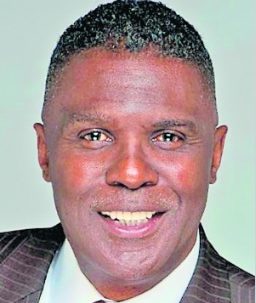By Glenn Ellis
Aren’t the holidays about good times with loved ones, great food, and fun? Anyway, beginning Jan. 1, you’ve probably made resolutions to eat healthier and work out. Starting then, you planned to get fit. This was your New Year’s resolution. Life will be better after December.
Sound familiar? It should if you’re one of the millions of people who find themselves unsatisfied with their excess body weight or sluggish physical condition at the turn of the calendar. In all parts of the world, the start of a new year inspires adults to give up junk food, join a gym or make healthier choices.
It is well established that regular, moderate-to-vigorous physical activity reduces the risk of future cardiac events in healthy individuals and individuals with existing cardiovascular disease.
So, if you’re like most Americans, getting more exercise is on your list of New Year’s resolutions. And for good reason: exercise is one of the key methods for lowering cholesterol – and blood pressure, my new concern – without medications. Oh, and that dropping weight side-benefit is kind of cool too.
Because bodies are living, breathing matter, they need to be stimulated in order to become more fit. This means exercise is ideally done just outside your comfort zone. If that is basically what exercise is, then you as an average Joe or Jane should be able to “just do it,” and be on your way to a healthy, well-toned body, right? Perhaps. But as many people know all too well, it’s not that easy to start a fitness routine, particularly for the out-of-shape and the inconsistent. To avoid overwhelming yourself, set realistic expectations.
Exercise does not need to be a formal activity. It does not require a big chunk of time carved out of your day. You know, there used to be a time when people stayed fit by doing ordinary things like housework, taking the stairs, and playing with their kids.
Apparently, to lower cholesterol and blood pressure, one needs to exercise for an average of 40 minutes at a ‘moderate-to-vigorous-intensity aerobic activity’ 3-4 days each week.
Guidelines from the U.S. Department of Health and Human Services suggest 75 minutes of “vigorous” aerobic activity or 150 minutes of “moderate” activity every week for adults. Vigorous activities include running, jumping rope or playing squash, activities where you can’t say more than a few words at a time. Moderate activities include brisk walking, dancing or biking, where you usually can talk but not sing.
Your heart rate is another way to gauge activity level. Start with 220 and subtract your age. Moderate activity is 50 to 70 percent of that number. For a 50-year-old, that’s a heart rate of about 85 to 120, according to the Centers for Disease Control and Prevention.
For the average person, a good fitness program consists of exercises that work out the whole body. A cardio workout improves the function and health of the heart, lungs, and blood vessels.
Some activities can even double as weight-bearing exercise, the other component of an ideal fitness program. Weight-bearing exercises enhance the function and health of the bones, muscles, joints, and connective tissues.
This type of exercise involves anything that uses body weight against gravity. Examples include walking, jogging, playing basketball, yoga, martial arts, push-ups, weight training, and free weights. Experts suggest starting out with one set of eight to 15 repetitions of one exercise two days a week.
To get maximum benefits, focus on working out the larger muscle groups. Most of the muscle mass in the body lies in the trunk, thighs, chest, back, and abdomen. Targeting these areas will give “you the biggest bang for your buck, so to speak, for your workout time.
Many a New Year’s resolution has been thwarted by injury. Some people are so gung-ho about getting fit that they are too aggressive at the beginning of their fitness program. As a result, they may become injured, feel a lot of soreness, or think of exercise as an unpleasant experience.
Start low and then gradually progress! The thing most of us forget is that we didn’t become out of shape overnight. We shouldn’t expect to become well-conditioned overnight.
You can weave exercise into daily activities. For example, if you commute to work, think about walking part of the way if you can.
In fact, about a third of New Year’s resolvers make weight loss their primary goal, and about 15% aim to begin an exercise program. If you’re nodding your head and thinking, “Yup, I’m one of those people,” take heart. Your objective is a noble one, and, if accomplished, will surely do wonders for your health.
For one group, the resolution to become more active could literally be the difference between life and death. Research released by the American College of Sports Medicine finds that being more physically active can help adults suffering from heart disease keep premature death at bay.
Remember, I’m not a doctor. I just sound like one.
Take good care of yourself and live the best life possible!
The information included in this column is for educational purposes only. It is not intended nor implied to be a substitute for professional medical advice. The reader should always consult his or her healthcare provider to determine the appropriateness of the information for their own situation or if they have any questions regarding a medical condition or treatment plan.
Glenn Ellis, is a Health Advocacy Communications Specialist. He is the author of Which Doctor?, and Information is the Best Medicine. For more good health information, visit: www.glennellis.com.




